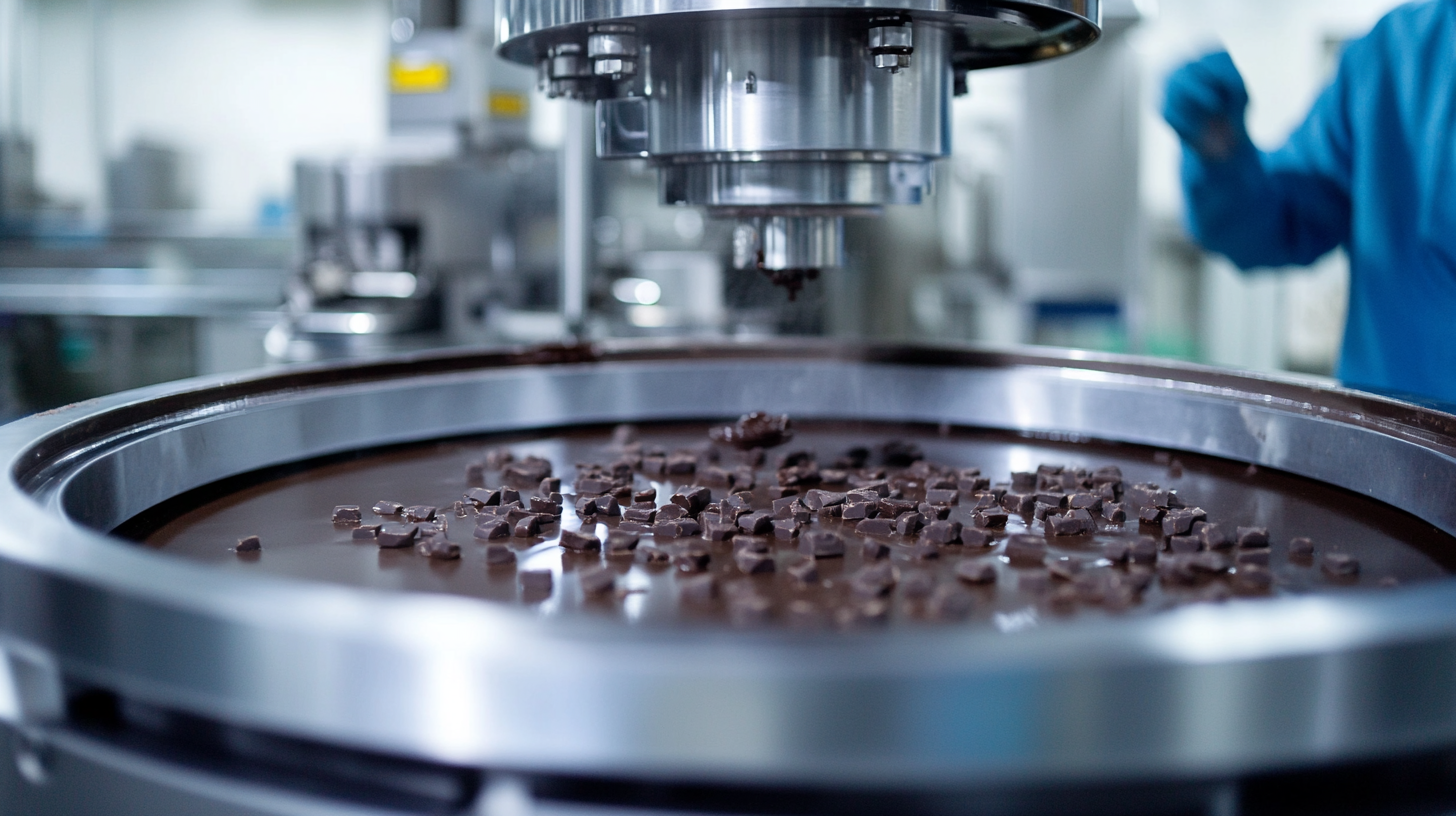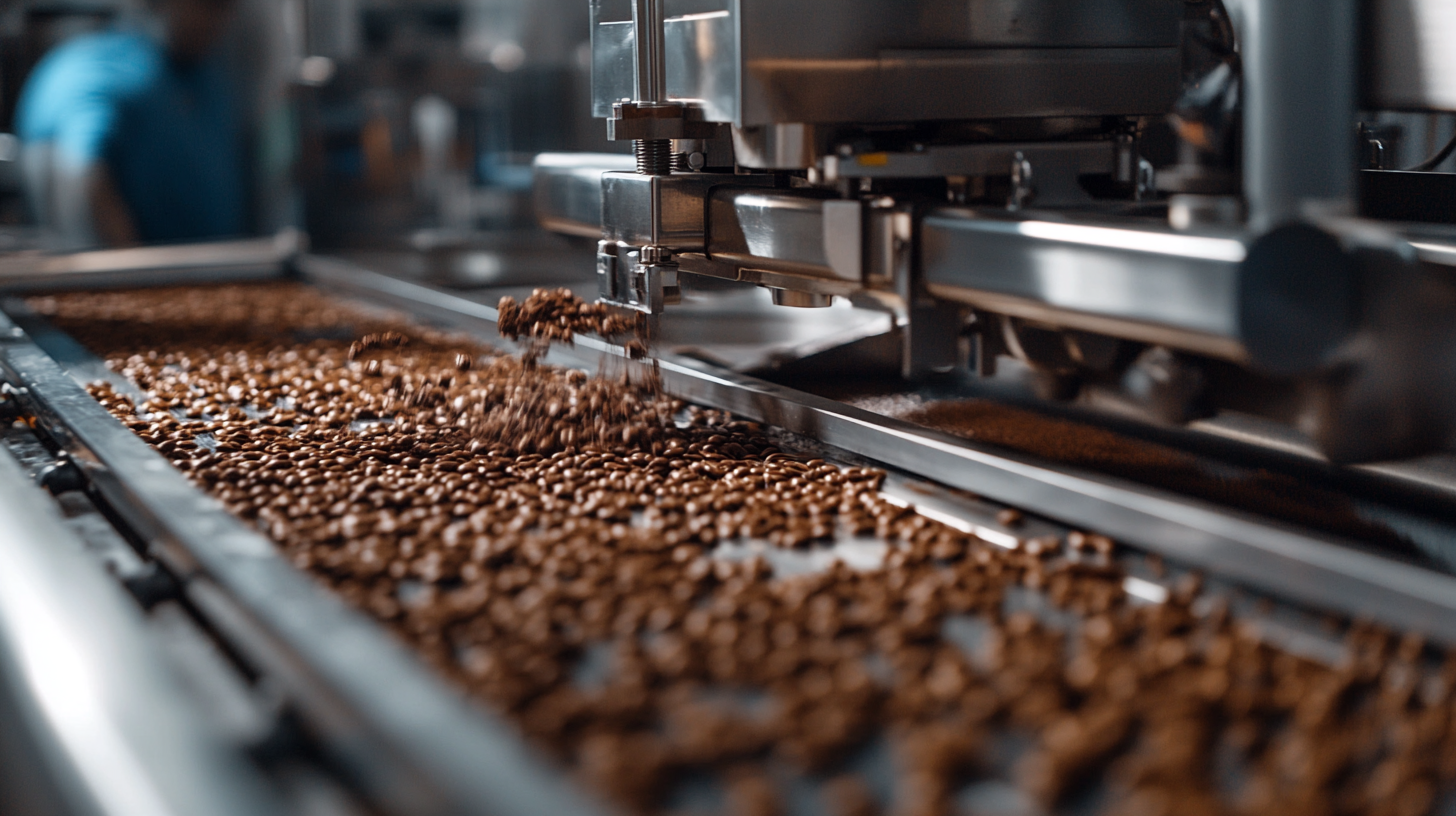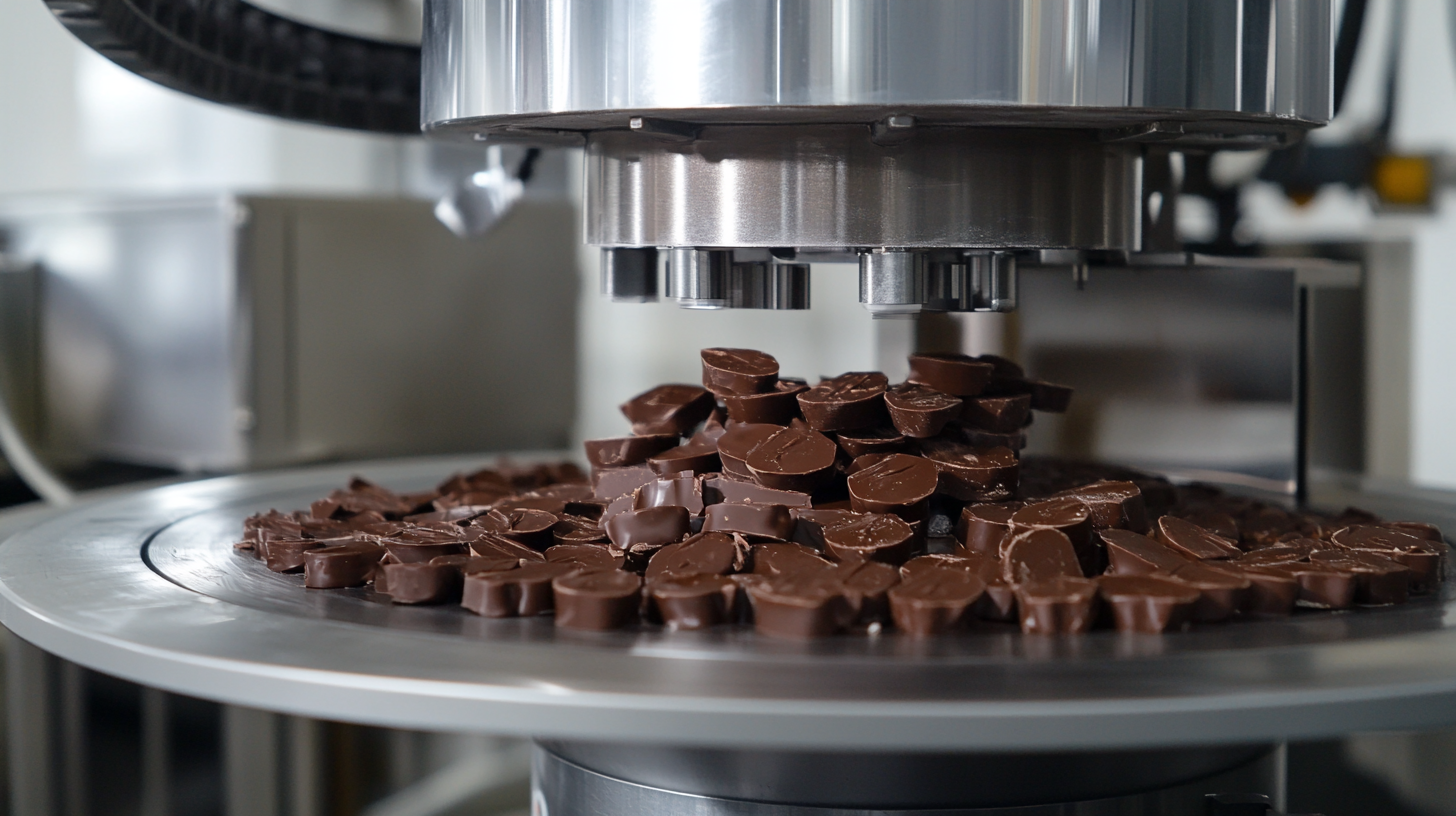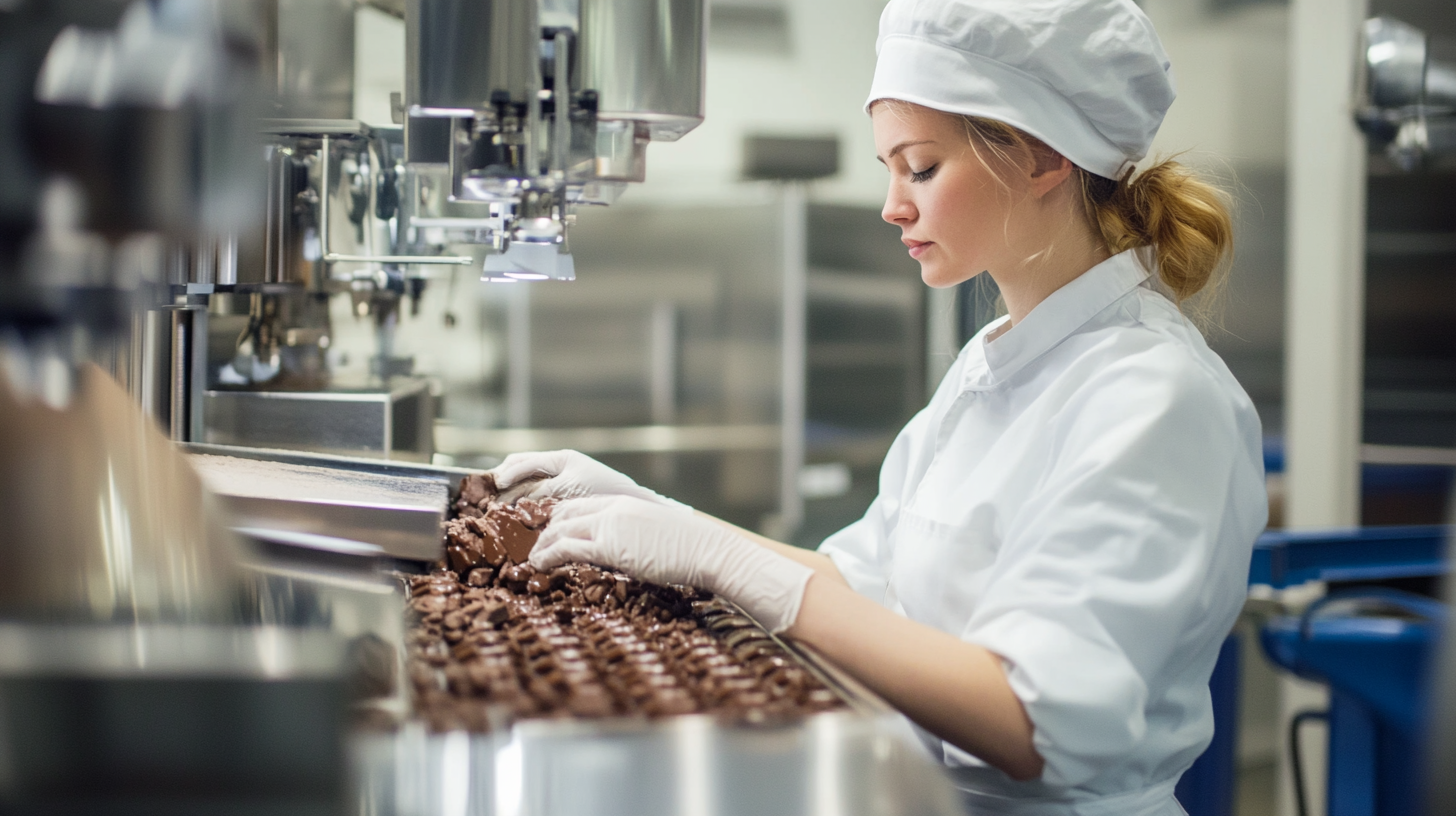The chocolate manufacturing industry has witnessed remarkable growth in recent years, driven by an increasing demand for premium chocolate products. According to a report by Research and Markets, the global chocolate market is projected to reach $162 billion by 2024, with a CAGR of 4.6%. As chocolate consumption rises, manufacturers are under immense pressure to enhance their production efficiency while maintaining premium quality. Investing in advanced Chocolate Making Machines is not just a trend but a necessity for companies looking to gain a competitive edge in this flourishing market.
Optimizing your investment in Chocolate Making Machines thus becomes critical for achieving maximum return on investment (ROI). A well-chosen machine can significantly reduce production time, minimize waste, and improve product consistency, ultimately contributing to higher profitability. Industry experts suggest that manufacturers must analyze various parameters such as machine scalability, energy efficiency, and product adaptability to secure the best financial outcomes. By understanding these essential insights, chocolatiers can make informed decisions that align their production capabilities with the evolving market demands, ensuring a successful and sustainable chocolate business.

Investing in chocolate manufacturing equipment is a significant commitment that requires careful consideration of various factors to ensure a maximum return on investment (ROI). One of the primary influences on ROI is the efficiency of the machinery itself. High-efficiency machines reduce production time and energy costs, which directly impacts profit margins. When selecting a chocolate making machine, it’s essential to evaluate its throughput capacity and energy consumption compared to similar models on the market. A well-chosen machine can not only streamline production but also enhance product quality, leading to better sales and customer satisfaction. Another crucial factor is maintenance and support services. The lifespan and productivity of chocolate manufacturing equipment can be significantly affected by how well it is maintained. Choosing machines that come with strong after-sales support and readily available spare parts can reduce downtime and repair costs. Additionally, investing in staff training to ensure operators are proficient in using the equipment can further optimize performance, translating into higher output and a better quality product. Market demands and trends can also sway the ROI from chocolate equipment investments. As consumer preferences change, having versatile machines that can adapt to new recipes or product formats will allow manufacturers to stay competitive. Investing in technology that supports customization can lead to increased sales opportunities and open up new market segments, making the initial investment more worthwhile in the long run. Paramount to maximizing your ROI is staying informed about both the technical capabilities of your equipment and the shifts within the chocolate market.

In today's competitive landscape, understanding production efficiency is crucial for optimizing investments in chocolate making machines and enhancing profit margins. As companies strive for high-quality manufacturing, they must adapt to technological advancements and leverage data analytics to boost efficiency. The recent reports on declining profit margins and operational challenges in various sectors underscore the importance of continuous improvement in production processes.
The integration of digital tools into manufacturing can significantly impact production efficiency. Companies that harness data analytics can streamline operations, reduce waste, and improve overall output quality. This shift is not merely a trend but a necessary evolution in response to the pressures of market competition and consumer demand for better products at lower prices. For chocolate makers, this might mean investing in advanced machinery that utilizes smart technologies for real-time monitoring and adjustments, ultimately enhancing both productivity and profitability.
Moreover, the insights gained from data-driven decision-making can help pinpoint inefficiencies within production lines. Understanding these nuances allows manufacturers to prioritize upgrades and investments effectively, ensuring that every expense contributes to a robust return on investment. With increasing pressures from global economic shifts and market fluctuations, maintaining a laser focus on production efficiency can draw a clearer path toward sustainable profitability in the chocolate industry.

The chocolate production industry has seen a remarkable evolution, driven by changing consumer preferences and technological advancements. As the demand for premium and artisanal chocolates continues to rise, manufacturers are increasingly focusing on optimizing their processes to enhance both quality and efficiency. Current market data indicates that the global chocolate market is projected to reach unprecedented heights, with a compounded annual growth rate (CAGR) of over 4% in the coming years. This growth highlights the necessity for chocolate makers to invest in modern machinery that aligns with industry trends.
Future projections suggest that sustainability will play a key role in shaping chocolate production strategies. Consumers are becoming more environmentally conscious, and their preference for ethically sourced ingredients has prompted manufacturers to reevaluate their supply chains. Investing in machines that support eco-friendly practices, such as energy-efficient processing equipment and waste reduction technologies, can significantly improve a company's market position. Efficient production methods not only boost output but also minimize the environmental impact, which is becoming a critical factor for gaining consumer trust and loyalty.
Moreover, the increased focus on customization in chocolate offerings reflects another vital trend in the market. As consumers seek personalized experiences, chocolate makers are required to adapt their production processes to cater to diverse tastes and dietary needs, including vegan, gluten-free, and low-sugar options. Modern chocolate-making machines equipped with flexible configurations enable manufacturers to innovate and expand their product lines, ensuring they stay ahead in a competitive landscape. Embracing these trends will be crucial for chocolate producers looking to maximize their return on investment and fortify their market presence in an ever-evolving industry.

Maintaining your chocolate making machine is crucial for ensuring longevity and maximizing your investment. Regular maintenance not only prolongs the life of the equipment but also enhances production efficiency and product quality. One of the best practices is to establish a routine cleaning schedule. Chocolate residue can quickly accumulate, leading to cross-contamination and issues with flavor. Using food-safe cleaning agents and tools specifically designed for chocolate machinery can prevent buildup and keep operations running smoothly.
Another essential aspect of machine maintenance is routine inspection and calibration. By regularly checking components such as heating elements, agitation mechanisms, and temperature sensors, you can identify potential issues before they escalate into costly repairs. Staying on top of these inspections helps ensure that the machine continues to produce consistently high-quality chocolate, which is pivotal to maintaining customer satisfaction and loyalty.
Finally, investing in staff training is vital for optimal machine operation. Educating your team about correct usage procedures and maintenance protocols cultivates a responsible machine culture. Creating easy-to-follow guides and conducting training sessions can empower employees, enabling them to recognize signs of wear and tear early on and address minor issues proactively. Combining thorough training with regular maintenance checks will lead to a more efficient chocolate production process and substantial return on investment.
Investing in automation technology for chocolate making isn't just a trend; it's a strategic move that can yield significant returns. A recent industry report highlights that companies investing in automation can see productivity increases of up to 20-50%. By integrating automated chocolate making machines, manufacturers can optimize their production processes, reduce labor costs, and ensure consistent product quality. The cost of high-quality machinery is often justified over time through these efficiencies, leading to a stronger competitive position in the market.
However, the balance of cost versus benefit is crucial. While the initial investment in advanced chocolate making technology may seem steep, operational efficiencies often lead to a remarkable decrease in production time and waste. According to a study from the International Society for Chocolate, companies that automated their processes reported a reduction in production waste by approximately 15-30%, further enhancing profit margins. Each percentage point saved in waste directly correlates to greater ROI, making this investment a wise financial decision.
Moreover, consumer trends show a rising demand for high-quality, artisan chocolates, pushing manufacturers to enhance their production techniques. By adopting automation, companies can not only meet but exceed these demands while maintaining scalability. Investing in modern chocolate making machines is not merely a technological upgrade; it is a pathway to unlocking higher profitability and sustainability in a rapidly evolving market.